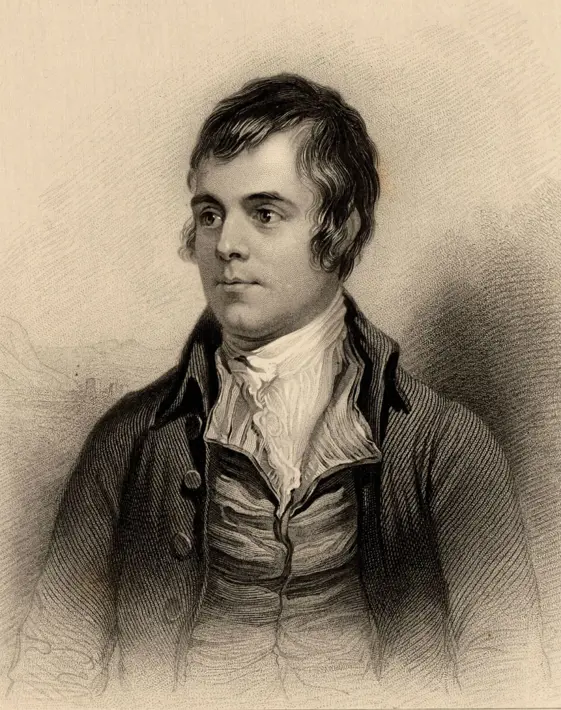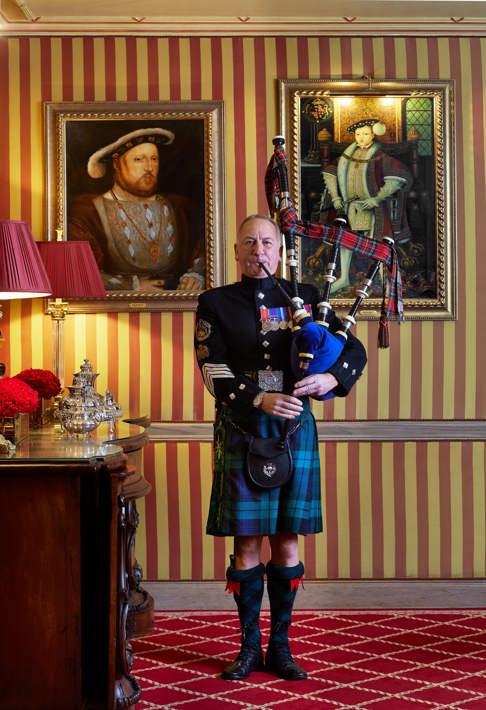
Discover the history of Burns Night
This cherished tradition, blending poetry, music, food, and camaraderie symbolises the enduring celebration of Scottish culture worldwide.
27 Nov 2023
This cherished tradition, blending poetry, music, food, and camaraderie symbolises the enduring celebration of Scottish culture worldwide.
27 Nov 2023
Every year on the 25th January, Scots around the world gather to celebrate Burns Night, a vibrant and joyous occasion dedicated to the life and works of Scotland's national poet, Robert Burns. This cultural extravaganza, marked by poetry, music, food, and camaraderie, has a rich history that spans over two centuries. Explore the roots and evolution of Burns Night, understanding how it has become a cherished tradition for Scots and enthusiasts worldwide.

© Robert Burns Engraving A Biographical Dictionary Of 1870
Robert Burns, born on January 25, 1759, in Alloway, Ayrshire, was a poet, lyricist, and folklorist whose impact on Scottish literature and culture is immeasurable. Commonly known as the "Bard of Ayrshire" or simply "The Bard," Burns wrote extensively in the Scots language, capturing the essence of Scottish life, love, and societal issues. His most famous works include "Auld Lang Syne," "To a Mouse," and "Tam o' Shanter."
Burns's ability to connect with the common people through his poetry earned him widespread admiration. Unfortunately, Burns's life was cut short, and he passed away at the age of 37. However, his legacy endured, and his birthday was soon commemorated by admirers who recognised the significance of his contributions to Scottish culture.
The first recorded Burns Night Supper took place in 1801, five years after Robert Burns's death. A group of the poet's friends gathered in Ayrshire to honor his memory on the anniversary of his birth. The event proved so successful and enjoyable that it became an annual tradition.
The structure of the Burns Night Supper was formalized over time, with key elements that remain integral to the celebration today. The evening typically includes the piping in of the guests, the recitation of Burns's poetry, the famous "Address to a Haggis," the raising of a toast to the lassies, and the reply from the lassies. Traditional Scottish music and dance often accompany the festivities, creating an immersive experience that captures the spirit of Scottish heritage.

The evening traditionally begins with the skirl of bagpipes, setting a festive tone as guests enter the venue.
One of the central highlights of Burns Night is the dramatic recitation of "Address to a Haggis." This ode to Scotland's national dish is performed just before the haggis is ceremoniously cut and served.
Throughout the evening, various toasts are raised, including the immortal memory of Robert Burns. Guests often take turns reciting Burns's poems, ensuring that his words echo through the gathering.
A playful yet respectful tradition, this toast involves a humorous and affectionate reflection on the role of women, followed by a formal toast.
In the spirit of equality, the lassies are given the opportunity to respond, offering a witty and often humorous rejoinder to the previous toast.

Scots and non-Scots alike come together to pay homage to the enduring legacy of Robert Burns all over the world on the 25th January. From Edinburgh to New York, Sydney to Cape Town, people gather for Burns Night Suppers, each event contributing to the global tapestry of Scottish culture.
Burns Night stands as a testament to the enduring power of literature, poetry, and cultural traditions. The celebration not only honours the life and works of Robert Burns but also serves as a vibrant expression of Scottish identity. As we continue to commemorate this cultural extravaganza, we ensure that the flame of Scottish heritage burns brightly for generations to come, uniting people in the shared joy of poetry, music, and camaraderie.
Join us as we honour the legacy of Scottish poet Robert Burns at the English Grill with an exclusive, adults-only black-tie event in the heart of London.
